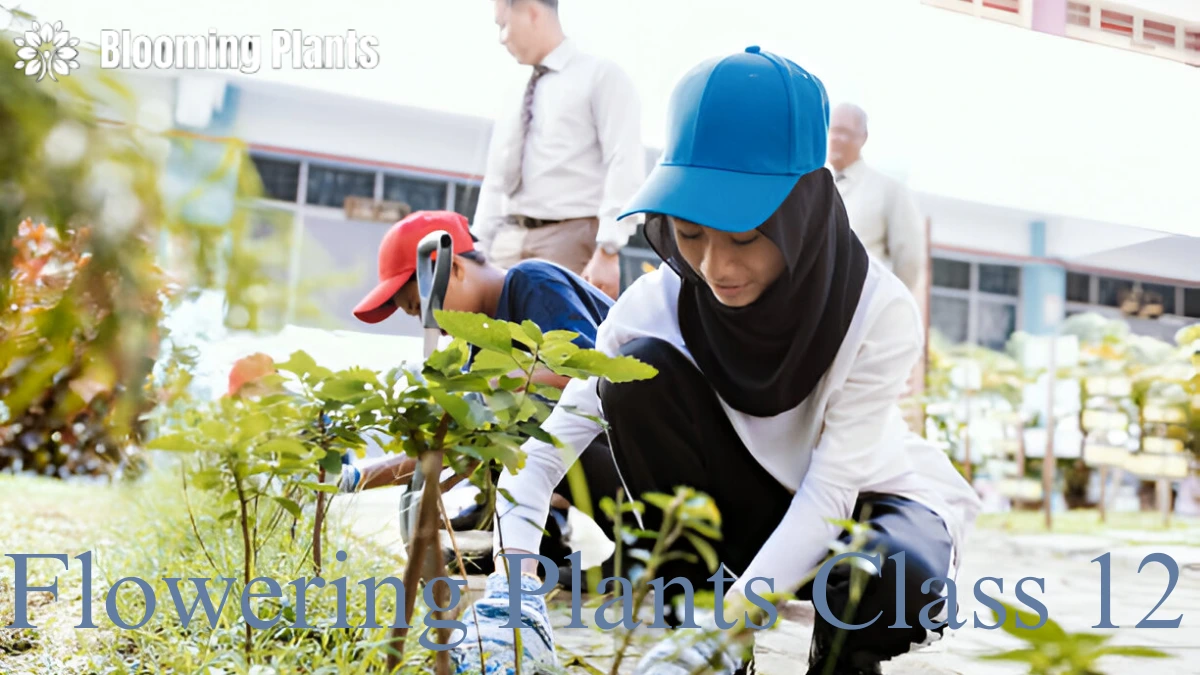1. Introduction to Flowering Plants in Class 12 Biology
Overview of the Flowering Plants Class 12
Flowering Plants Class 12, also known as angiosperms, are a key focus in Class 12 biology. These plants dominate the terrestrial ecosystem due to their adaptive features, such as fruit-enclosed seeds. This topic gives students a deeper understanding of plant anatomy, physiology, and reproduction.
Importance in Biology Curriculum
Understanding flowering plants is crucial for mastering botany. This chapter lays the foundation for higher studies in plant sciences and is also vital for acing competitive exams like NEET and AIIMS. It explores fundamental concepts like morphology, pollination, and seed formation.
2. Morphological Features of Flowering Plants
Root System of Flowering Plants Class 12
The root system can be classified into two types: taproot (e.g., dicots) and fibrous roots (e.g., monocots). It anchors the plant and absorbs water and minerals from the soil.
Shoot System
The shoot system includes stems, leaves, flowers, and fruits. Stems provide support and transport nutrients, while leaves are the primary sites for photosynthesis. Flowers are the reproductive units of angiosperms, leading to fruit and seed formation.
3. Classification of Flowering Plants
Monocotyledons of Flowering Plants Class 12
Monocots, such as wheat and rice, have a single cotyledon, parallel venation, and scattered vascular bundles. Their floral parts are typically in multiples of three.
Dicotyledons
Dicots, like mango and sunflower, have two cotyledons, reticulate venation, and a ring-like arrangement of vascular bundles. Their floral parts are usually in multiples of four or five.
4. Anatomy of Flowering Plants
Tissue Systems of Flowering Plants Class 12
The three primary tissue systems are:
- Epidermal Tissue System: Outer protective layer.
- Ground Tissue System: Involved in photosynthesis and storage.
- Vascular Tissue System: Comprises xylem and phloem for transport.
Secondary Growth
Secondary growth involves the increase in girth due to the activity of cambium, leading to the formation of wood and bark in dicots.
5. Reproduction in Flowering Plants
Pollination of Flowering Plants Class 12
Pollination is the transfer of pollen from the anther to the stigma. It can be of two types:
- Self-Pollination: Pollen from the same flower fertilizes the ovule.
- Cross-Pollination: Pollen from one flower fertilizes another, promoting genetic diversity.
Fertilization and Seed Formation
Double fertilization is a unique feature of angiosperms, where one sperm cell fuses with the egg, and another forms the endosperm. This process ensures the formation of seeds and fruits.
6. Economic Importance of Flowering Plants
Food and Agriculture
Crops like wheat, rice, and maize are staple foods derived from flowering plants. They provide carbohydrates, proteins, and essential nutrients to sustain human life.
Medicinal Uses of Flowering Plants Class 12
Many flowering plants have medicinal properties. For instance, neem is antibacterial, and periwinkle is used in cancer treatment.
7. Frequently Asked Questions (FAQs)
1. What are flowering plants?
Flowering plants, or angiosperms, are plants with seeds enclosed within fruits and have specialized reproductive structures called flowers.
2. What is the significance of double fertilization?
Double fertilization leads to the formation of both the embryo and endosperm, ensuring nourishment for the developing seed.
3. How are monocots different from dicots?
Monocots have one cotyledon and parallel venation, while dicots have two cotyledons and reticulate venation.
4. Why is the study of flowering plants important?
It helps understand plant biology, supports agriculture, and lays a foundation for advancements in botany and medicine.

